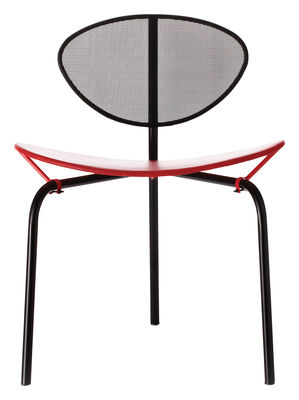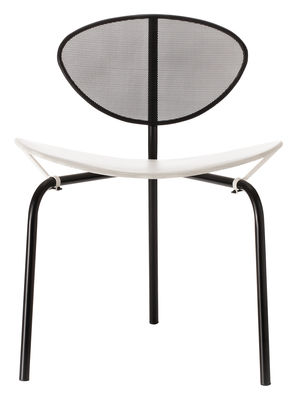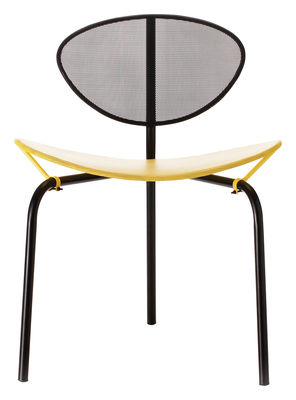- MADE IN DESIGN chairs and high armchairs GUBI - MATHIEU MATéGOT
- 3 products.
- Brand
- AA-New Design
- Alias
- And Tradition
- Arco
- Arper
- B-LINE
- Casamania
- De Padova
- Design of Love by Slide
- Diesel with Moroso
- Driade
- Emeco
- Emu
- EOQ
- Ercol
- Eumenes
- Fermob
- Fermob Idoles
- Flux
- Fritz Hansen
- Gubi
- Gubi - Mathieu Matégot
- Hartô
- Hay
- House Doctor
- ICF
- Internoitaliano
- Jonathan Adler
- Kartell
- Kristalia
- Label Edition
- Lapalma
- Magis
- Matière Grise
- Mattiazzi
- MDF Italia
- Meccano Home
- Memphis Milano
- Menu
- Moooi
- Moroso
- Moustache
- Muuto
- Normann Copenhagen
- Ondarreta
- Opinion Ciatti
- Oxyo
- Petite Friture
- Plank
- Qui est Paul ?
- Seletti
- Sifas
- Skargaarden
- Slide
- Souvignet Design
- TOG
- Tolix
- Tom Dixon
- Universo Positivo
- Viccarbe
- Wrong for Hay
- Y'a pas le feu au lac
- Zanotta
- Zeitraum
- Zeus
 ArmchairsAudio speakers and soundBaggage, wash bags, pursesBar stoolsBaskets and storageBaskets, centerpieces, bowlsBathroom accessoriesBedsBedside tablesBenchesBinsBookcases and shelvesBooks, Dvd'sBowls and salad bowlsBoxes and jarsCandles and candle holdersChairs and high armchairsClocksCoat racks and pegsCoffee makersCoffee tablesConsole tableCorkscrewsCushionsDecoration boxesDecoration objectsDressers, chest of drawers, wardrobesHigh tables and barsHightech and connected objectsHousehold appliancesJewelryKidsKids furnitureKitchen knivesKitchenwareLight up furnitureLighting Bulbs and accessoriesLighting Ceiling lightsLighting Desk lampsLighting Floor lampsLighting LED lightsLighting Light up furniture and accessoriesLighting Outdoor lightsLighting SuspensionsLighting Table lampsLighting Wall lampsMemo boards, slates and calendarsMirrorsMiscellaneous furnitureOffice accessoriesOffice chairsOffice furnitureOthersOutdoor ArmchairsOutdoor BarbecuesOutdoor Chairs and high armchairsOutdoor Coffee tablesOutdoor Deco and accessoriesOutdoor Flowerpots and houseplantsOutdoor High tables and BarsOutdoor ParasolsOutdoor Poufs and cushionsOutdoor Reclining chairs / Sun loungersOutdoor ShowersOutdoor SofasOutdoor TablesPartitions, screens, room dividersPens and notebooksPetsPots and pansPots and plantsPoufsRadios and alarm clocksRugsShoe polisherShoesSofasStickers and wallpapersStoolsStorage furnitureSugar and cream bowlsTablesTablewareTableware AccessoriesTableware Bar, wine, aperitifTableware Bowls and salad bowlsTableware CarafesTableware CutleryTableware EggcupsTableware Fruit basketsTableware GlassesTableware Oil and vinegarTableware PlatesTableware SeasoningTableware Service cutleryTableware Serving platesTableware Tableclothes and napkinsTableware Tea and coffeeTableware Teacups and mugsTableware TraysTableware TrivetsTea towels and apronsTeapots and kettlesTextileTote bagTV tablesUseful and cleverVasesWatches
ArmchairsAudio speakers and soundBaggage, wash bags, pursesBar stoolsBaskets and storageBaskets, centerpieces, bowlsBathroom accessoriesBedsBedside tablesBenchesBinsBookcases and shelvesBooks, Dvd'sBowls and salad bowlsBoxes and jarsCandles and candle holdersChairs and high armchairsClocksCoat racks and pegsCoffee makersCoffee tablesConsole tableCorkscrewsCushionsDecoration boxesDecoration objectsDressers, chest of drawers, wardrobesHigh tables and barsHightech and connected objectsHousehold appliancesJewelryKidsKids furnitureKitchen knivesKitchenwareLight up furnitureLighting Bulbs and accessoriesLighting Ceiling lightsLighting Desk lampsLighting Floor lampsLighting LED lightsLighting Light up furniture and accessoriesLighting Outdoor lightsLighting SuspensionsLighting Table lampsLighting Wall lampsMemo boards, slates and calendarsMirrorsMiscellaneous furnitureOffice accessoriesOffice chairsOffice furnitureOthersOutdoor ArmchairsOutdoor BarbecuesOutdoor Chairs and high armchairsOutdoor Coffee tablesOutdoor Deco and accessoriesOutdoor Flowerpots and houseplantsOutdoor High tables and BarsOutdoor ParasolsOutdoor Poufs and cushionsOutdoor Reclining chairs / Sun loungersOutdoor ShowersOutdoor SofasOutdoor TablesPartitions, screens, room dividersPens and notebooksPetsPots and pansPots and plantsPoufsRadios and alarm clocksRugsShoe polisherShoesSofasStickers and wallpapersStoolsStorage furnitureSugar and cream bowlsTablesTablewareTableware AccessoriesTableware Bar, wine, aperitifTableware Bowls and salad bowlsTableware CarafesTableware CutleryTableware EggcupsTableware Fruit basketsTableware GlassesTableware Oil and vinegarTableware PlatesTableware SeasoningTableware Service cutleryTableware Serving platesTableware Tableclothes and napkinsTableware Tea and coffeeTableware Teacups and mugsTableware TraysTableware TrivetsTea towels and apronsTeapots and kettlesTextileTote bagTV tablesUseful and cleverVasesWatches
369.60 £
Gubi - Mathieu Matégot
Gubi - Mathieu Matégot Chair Red,Black Metal W 54 cm x D 50 cm x H 74 cm Mathieu Matégot's organic forms and lightness of touch create a sense of joy and the ground breaking and innovative techniques that he employed result in aesthetic and, above all, contemporary designs. Matégot was the first person to combine metal tubing with perforated sheet metal, a pairing that particularly characterizes his work. Many designers spend years developing their designs, simply to make them better and better. This was certainly not the case with Mathieu Matégot. He only devoted one decade to the design of furniture and interior accessories, yet these distinctive 1950's designs would later be considered iconic. Today, Matégot's designs are equally fit for purpose as when they were originally conceived and his legendary designs are both timeless and classic. The Nagasaki chair is one of few three-legged models and is still Matégot's best-known piece and is included in the permanent exhibition at the Vitra Design Museum. The collection includes chair, high stool, side table, bookshelf and wall coatrack. This wall coatrack is made of a brass central hub, arms and ends are in powder coated metal. Three-legged chair - Concave seat and back - Reissue of the chair designed by Mathieu Matégot in the 50s (permanent exhibition of the Design Vitra Museum)

369.60 £
Gubi - Mathieu Matégot
Gubi - Mathieu Matégot Chair White,Black Metal W 54 cm x D 50 cm x H 74 cm Mathieu Matégot's organic forms and lightness of touch create a sense of joy and the ground breaking and innovative techniques that he employed result in aesthetic and, above all, contemporary designs. Matégot was the first person to combine metal tubing with perforated sheet metal, a pairing that particularly characterizes his work. Many designers spend years developing their designs, simply to make them better and better. This was certainly not the case with Mathieu Matégot. He only devoted one decade to the design of furniture and interior accessories, yet these distinctive 1950's designs would later be considered iconic. Today, Matégot's designs are equally fit for purpose as when they were originally conceived and his legendary designs are both timeless and classic. The Nagasaki chair is one of few three-legged models and is still Matégot's best-known piece and is included in the permanent exhibition at the Vitra Design Museum. The collection includes chair, high stool, side table, bookshelf and wall coatrack. This wall coatrack is made of a brass central hub, arms and ends are in powder coated metal. Three-legged chair - Concave seat and back - Reissue of the chair designed by Mathieu Matégot in the 50s (permanent exhibition of the Design Vitra Museum)

369.60 £
Gubi - Mathieu Matégot
Gubi - Mathieu Matégot Chair Yellow,Black Metal W 54 cm x D 50 cm x H 74 cm Mathieu Matégot's organic forms and lightness of touch create a sense of joy and the ground breaking and innovative techniques that he employed result in aesthetic and, above all, contemporary designs. Matégot was the first person to combine metal tubing with perforated sheet metal, a pairing that particularly characterizes his work. Many designers spend years developing their designs, simply to make them better and better. This was certainly not the case with Mathieu Matégot. He only devoted one decade to the design of furniture and interior accessories, yet these distinctive 1950's designs would later be considered iconic. Today, Matégot's designs are equally fit for purpose as when they were originally conceived and his legendary designs are both timeless and classic. The Nagasaki chair is one of few three-legged models and is still Matégot's best-known piece and is included in the permanent exhibition at the Vitra Design Museum. The collection includes chair, high stool, side table, bookshelf and wall coatrack. This wall coatrack is made of a brass central hub, arms and ends are in powder coated metal. Three-legged chair - Concave seat and back - Reissue of the chair designed by Mathieu Matégot in the 50s (permanent exhibition of the Design Vitra Museum)